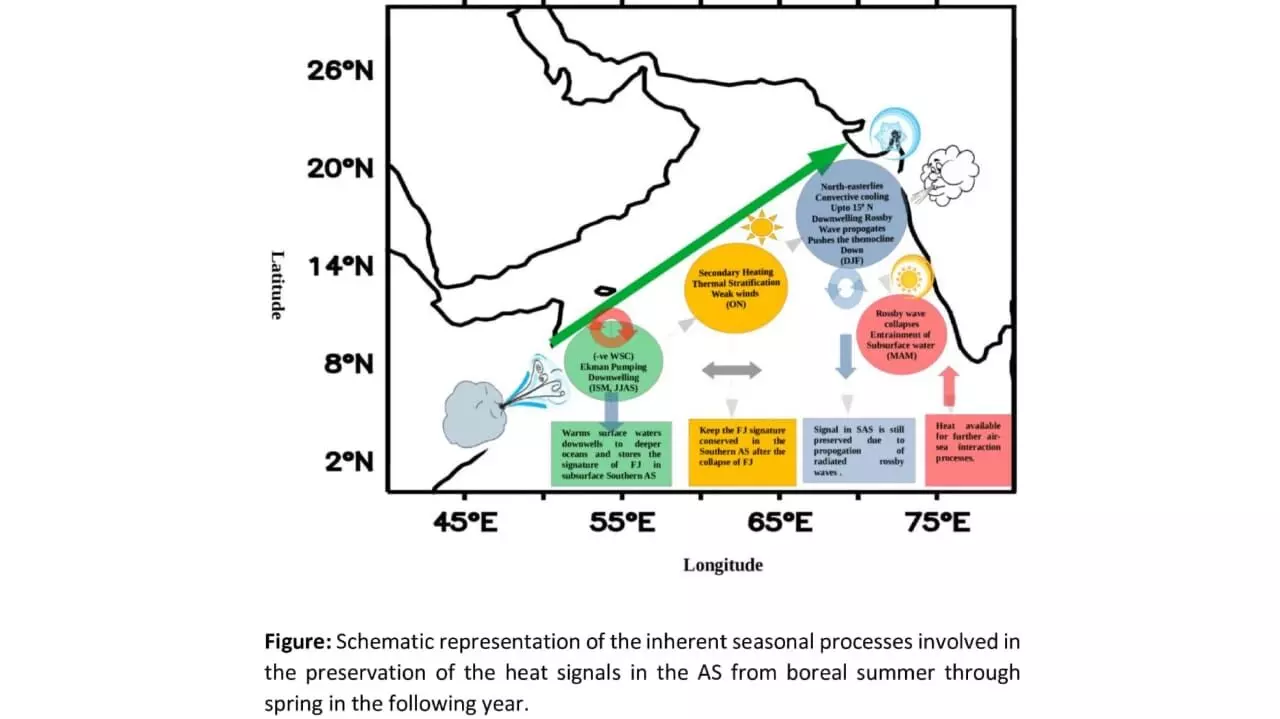Study: Arabian Sea to serve as memory bank for Indian summer monsoon circulation
This low-level atmospheric jet in the Arabian Sea (AS) is known as the Findlater Jet (FJ).

HYDERABAD: A paper published in Scientific Reports by the University of Hyderabad (UoH) hypothesises that the signal of the Indian summer monsoon winds over the Arabian Sea Findlater Jet is trapped in the Arabian Sea until almost the next March. That is, the Arabian Sea serves as a sort of memory bank for the summer monsoon. The Upper Ocean's seasonal cycle and air-sea interaction are important.
The Indian Summer Monsoon (ISM), also known as the southwest monsoon, is a well-known ocean-atmospheric phenomenon characterised by organised south-westerly winds and increased rainfall from June to September. The cross-equatorial south-westerly winds from the East African coast to India form by the end of May, intensify into a low-level jet in July, and dissipate by the end of September. This low-level atmospheric jet in the Arabian Sea (AS) is known as the Findlater Jet (FJ).
The FJ's axis is represented by the maximum wind speed region at 850 millibars (about 1.5 km) in height and extends from the Horn of Africa to the coast of Gujarat in India. The FJ's strength is known to influence ISM rainfall over the Indian subcontinent. Strong FJs are generally associated with more active spells (more rain days) of ISM rainfall, whereas weak FJs are associated with breaks (fewer rainfall days).
The FJ is known to have an impact on the upper ocean. Through Ekman dynamics, the cyclonic wind stress north of the FJ axis induces open-ocean upwelling, while the anticyclonic wind stress south of the axis induces open-ocean downwelling. This causes modulation of mixed layer depth and upper ocean heat content on either side of the FJ axis.
The current study demonstrates that all of this results in a deep thermocline in the central AS region during the ISM, trapping a large amount of heat. Wind stress curl is positive over large parts of the AS during the winter monsoon months due to a change in wind direction. Interestingly, we discover that, contrary to expectations, the thermocline does not shoal and reduce the upper ocean heat content in the central AS.
There are two causes for this. First off, the AS experiences lesser winds that are dispersed over a wider area, resulting in a low wind stress curl. Second, the wind stress in the eastern AS induces downwelling Rossby waves that propagate westward, deepening the thermocline and preventing trapped heat from rising again? The trapped heat is released during the next spring when the Rossby waves collapse, shoaling, and mixing of underlying and surface waters occur.
The AS functions as a sort of memory bank for the FJ-induced signal produced the summer before thanks to the resurfacing of the trapped heat. The local sea surface temperature may be pre-conditioned by this stored signal in the AS to have a specific impact on the upcoming monsoon. Therefore, the results of this study have important ramifications for understanding the dynamics and thermodynamics of the upper ocean in the AS as well as the summer monsoon and its forecasting.
This research was led by Vikas Kushwaha, a Postdoctoral researcher at the University of Hyderabad's Centre for Earth, Ocean, and Atmospheric Sciences, in collaboration with his PhD supervisor Prof. Karumuri Ashok, Dr. Feba Francis, a Research Associate, and Prof. Prasanna Kumar, a former Chair Professor at the Centre. The researchers also acknowledge suggestions from Prof. Satish Shetye, another former Chair Professor of the Centre at the initial stages.



